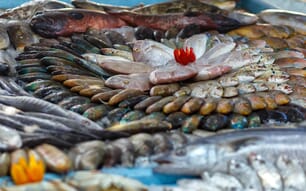The report, Review and update of harvest strategy settings for the Commonwealth Small Pelagic Fishery, was undertaken by the CSIRO and released today by the Fisheries Research and Development Corporation. It looks at four main target species in the SPF - Jack Mackerel, Redbait, Blue Mackerel and Australian Sardine.
“The Government is committed to a balanced and informed approach to fisheries management and we have said all along that we would seek updated science for this fishery,” Senator Colbeck said.
“The total allowable catches for the SPF are reviewed each season, based on the best available science, to ensure they remain sustainable.”
“Australia’s fisheries are world class and sustainably managed and we will continue to make any decisions regarding Australian fisheries based on sound science.”
The report recommends maximum harvest rates for key SPF species and breaks them down according to species and zones. It recommends nine per cent for the Eastern Redbait stock, 10 per cent for the Western Redbait stock, 12 per cent for both the Eastern and Western Jack Mackerel stocks, 23 per cent for both Eastern and Western Blue Mackerel stocks and 33 per cent for the Eastern Australian Sardine stock.
The harvest rate for all stocks for the current season is currently set at 7.5 per cent of the estimated fish population.
“Commonwealth fisheries have conservative catch limits to ensure our fisheries are available for current and future generations to enjoy,” Senator Colbeck said.
The report also found that SPF target species have only minor impacts on other parts of the ecosystem, as alternative food sources exist for large predators such as tuna.
“None of the key higher trophic level predators in SE Australia, such as seals, penguins and tunas, has a high dietary dependence on these species.” (Review and update of harvest strategy settings for the Commonwealth Small Pelagic Fishery)
The research project will be considered by the Resource Assessment Group for the SPF (SPFRAG) at its meeting next week.
Another research programme is now well underway to estimate the current size of Eastern Jack Mackerel, with the results expected in March.



